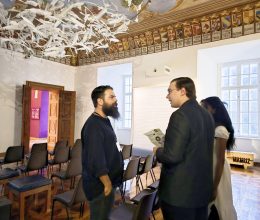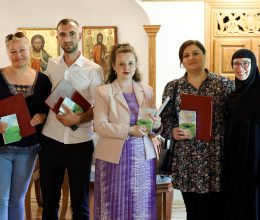Address by Prof. Dr. Aleksandar Spasenovski, promoter of the edition “Bigorska Chronicle – Archpastoral Quinquennium,” at the Bigorski Monastery, November 2, in the Year of Our Lord 2025
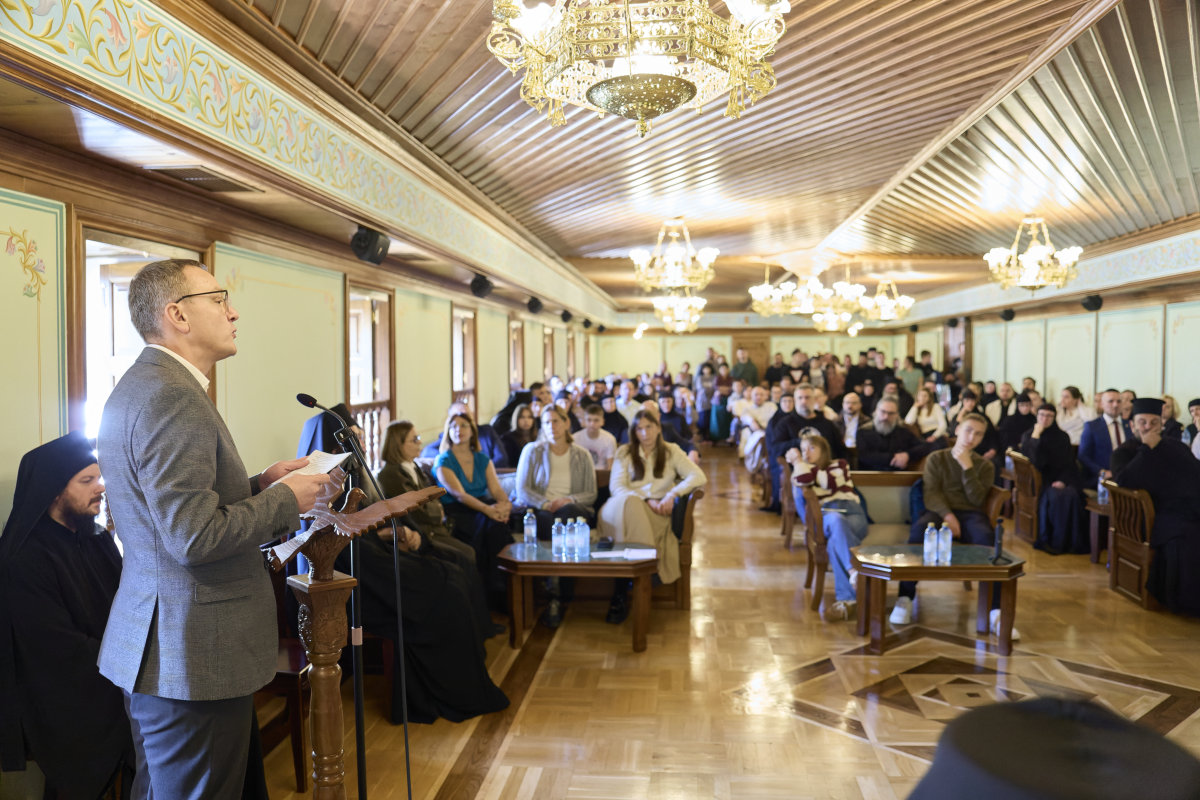 Reverend Fathers,
Reverend Fathers,
Representatives of Sister Churches,
Dignitaries,
Guests of the Bigorski Monastery,
Dear friends,
Today we stand before a work that is a spiritual icon of an age in which the presence of God is revealed through the deeds of His faithful servants.
The “Bigorska Chronicle – Archpastoral Quinquennium” is a testimony of how, in a monastery in the very heart of Macedonia, the Divine Economy unfolds—how the Holy Spirit transforms space and time into a living Tradition.
The Chronicle shows us that the history of the Church is not merely a sequence of events but a weaving of testimonies about the synergy between human will and Divine Providence.
Therefore, this edition should not be read only as a secular chronicle but as a Liturgy in words—a confession of a monastic community that has turned its life into prayer, service, and love.
Thirty years of monastic labor and five years of episcopal service of His Grace, Bishop Partenij of Antania, are presented within these five volumes, not only as part of a personal biography but as an epoch of spiritual resurrection.
Chronologically viewed, these five volumes represent an unbroken pilgrimage through time, beginning with the bishop’s consecration in 2020 and extending to 2025—when the spiritual community of the Bigorski Monastery celebrates its first five-year jubilee, as well as the thirty years of the monastic life of Father Partenij.
It is a period interwoven with trials and triumphs, silence and exaltation—a time when the Bigorski Monastery continually grows as an indomitable spiritual pillar, a source of light, and a place where faith transforms reality.
Under the guidance of the Elder, this holy place revived cenobitic monasticism and became a living example within the Orthodox world that obedience, humility, and love can turn life into paradise on earth.
The five volumes before us are like five stones in the mosaic of our contemporary spiritual history. They encompass a blessed five-year period—a time of building, of healing, and of new ecclesial unity. A time when, through prayer, labor, and love, fruits are born that will endure for generations to come—showing that from division can arise unity, and that from effort and ascetic struggle springs forth spiritual fruit that overflows into eternity.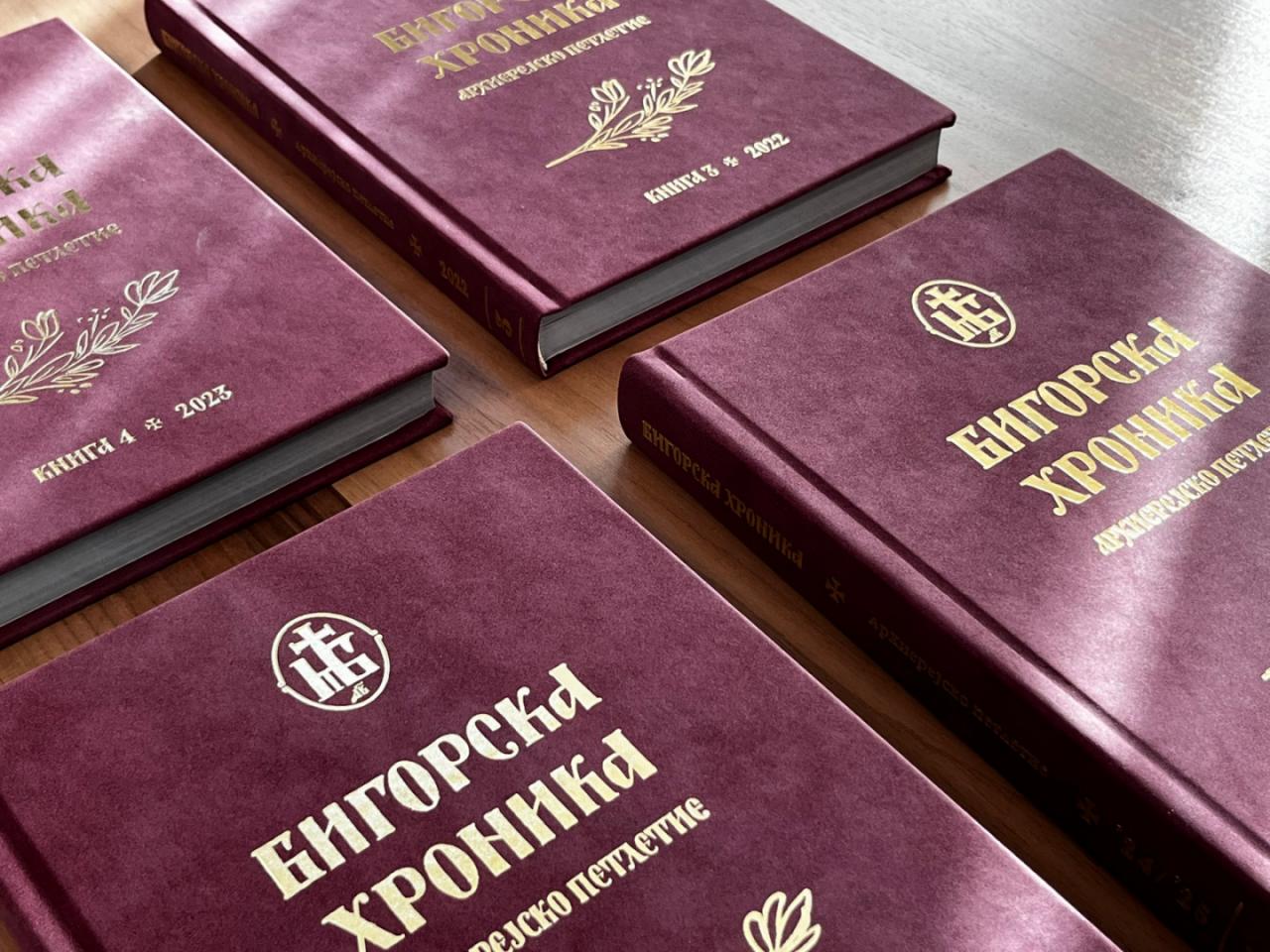
Dear friends,
Allow me to dwell on one of the most exalted aspects of this quinquennium: the role of the Bigorski Monastery in restoring ecclesial unity, that open wound which long awaited healing.
After decades of pain, when many doubted that the day of healing would ever come, the Lord, through the labors of His humble servants, willed to open that path.
On May 9, 2022, by the historic decision of the Ecumenical Patriarchate recognizing the canonical status of the contemporary successor of the glorious Archbishopric of Ohrid, the wound that had divided our Church from the Orthodox family for over half a century was finally healed.
That date stands as a milestone, an undeniable historical fact, a spiritual point of transfiguration—a moment when the tears of generations of monks, priests, and faithful were transformed into unspeakable joy.
In that process, the role of the Bigorski Monastery was both clearly recognized and gratefully acknowledged. His All-Holiness Ecumenical Patriarch Bartholomew, speaking on this matter, emphasized with particular love the “decisive contribution of the brotherhood of the Bigorski Monastery, under the God-loving Bishop Partenij of Antania—especially of him personally—in the entire process of healing and overcoming this long and grievous schism.”
Those words are not a formal expression of thanks, but a spiritual affirmation. For Bigorski, together with others, did not act as diplomats in the worldly sense, but as true spiritual mediators—men who, through faith, patience, and love, bore witness to the truth that unity is not negotiated but built through sacrifice.
In those years of uncertainty and silence, the prayers of this brotherhood were forging the hope of an entire people.
With the restoration of canonical communion, Bigorski— as is evident from these volumes—has continued at an ever-faster pace to rise as a spiritual center of Orthodox unity.
Through its gates pass hierarchs, clergy, and visitors from many local Churches, while the shared liturgies and fraternal meetings of the Bishop in Constantinople, Jerusalem, Athens, and other Orthodox centers have become a true Liturgy of love.
This beautifully conceived Chronicle, in the majestic spirit that pulses from Bigorski, with its pages filled with photographs, texts, and testimonies, reveals how faith and patience can transform the course of history.
There is no greater proof of the spiritual power of a man and a community than when, through them, God heals what was divided for centuries.
Thus, this work bears witness to the victory of love over pride, of humility over petty politics, and of faith over human calculation. It is a living reminder that the Church lives when it unites, not divides; when it heals, not judges; and when it seeks not glory for itself, but glory for God.

Dear friends,
Within this Chronicle, beyond the events of broader ecclesial life, one feels deeply the inner spiritual pulse of the Bigorski Monastery.
Here, behind these stone walls that open with prayer, lies a beautifully ordered kingdom of love, obedience, and silence.
It is the place where monasticism, renewed three decades ago under the spiritual guidance of Father Partenij, has become a true cenobitic life.
In him, many have found a spiritual father—one who not only guides them to faith but shares in their pain; who lifts them when they fall, counsels them when in doubt, and comforts them when they suffer.
He has fulfilled the apostolic measure of pastoral service: to lead not by command, but by example; to teach not by words, but by love; to be a bishop, yet a father; an elder, yet a brother.
During these five years—as seen from the pages of the Chronicle—this spiritual family has continually grown.
New monks and nuns have joined from various parts of the homeland and the world—souls who have felt the call to follow Christ’s path of humility here.
Bigorski and the other monasteries, through their fatherly care and sisterly warmth, have become their new home—a place where man does not lose himself, but finds himself in Christ.
This spiritual renewal, this resurrection of monasticism, is the greatest proof of the power of a spiritual leader.
For to rebuild walls is relatively easy, but to restore the human soul—that is the true ascetic feat.
And this is precisely what happens here—daily: the renewal of spirit, of brotherhood, of hope.
To the outward eye, the series of monastic services, feasts, and prayers may seem a simple tradition.
But to those who live by faith, they are trembling testimonies of a living Church.
That is why Bigorski is a living spiritual organism—a place where every breath, every labor, every prayer has an eternal direction.
In a time when many seek answers in what is external, here we are reminded that the greatest miracles occur within—in the heart that forgives, in the soul that loves, in the silence that becomes prayer.

Dear guests,
In a world that often loses the connection between the spiritual and the cultural, Bigorski bears witness that true culture springs from faith, and that true faith always generates culture.
In recent years, the Monastery has become not only a place of prayer but a source of spiritual art, cultural creativity, and social philanthropy.
From the pages of the Chronicle, we learn of dozens of events testifying to this holistic mission—concerts of sacred music, exhibitions, book promotions, art colonies, children’s camps, lectures—all of which are true extensions of prayer, pathways by which the light of faith transcends the monastery walls and illuminates the community.
Bishop Partenij has long surpassed the boundaries of traditional monastic understanding.
Through his approach, he demonstrates daily that the Church can be contemporary without becoming superficial; that it can speak the language of culture without losing spiritual depth; that it can reach the hearts of the young without renouncing the truth of the Gospel.
This is his vision.
Dear friends,
This approach is also reflected in many other areas of significant social importance—particularly in the philanthropic work of the Monastery.
Through its care for the poor, the addicted, the orphaned, and all who need warmth, Bigorski manifests the true dimension of Christianity—love in action.
Today, when we speak of spiritual and cultural mission, we do not speak of abstraction, but of real people, real lives, and real destinies transformed.
Every person who has felt the embrace of Bigorski becomes a living witness that faith can heal and teach to love anew.
Thus, this work once again confirms the ancient truth: that all that is beautiful, good, and noble in man is a reflection of God’s presence.
Therefore, when we speak of Bigorski today as a spiritual and cultural center, we speak not merely of a collection of activities, but of a living tradition—a synthesis of faith and art, intellect and spirit, word and silence.
Dear guests,
The five-volume edition of “Bigorska Chronicle – Archpastoral Quinquennium” is a confession of an age, a community, and a faith.
The five volumes, gathered as one, are like five candles lit in the darkness of the modern world—each with its own light, yet all sharing one source.
Each book carries the spirit of the year in which it was created, yet together they tell one story: the testimony of God’s presence in the work of the Bigorski Monastery.
These are not books that measure history by dates, but by grace; that do not count events, but record the miracles of faith; that do not describe the past, but bear witness to eternity.
In them we perceive the growth of a brotherhood and sisterhood, of a spiritual mission—from humble beginnings, through years of silence and patience, to the time of healing and unity, and finally to the maturity of a living tradition.
In every text and every photograph, one feels the pulse of this spiritual history—as though inscribed with the breath of prayer that has kept these holy walls alive for a thousand years.
Yet this great work is not a finished labor—it is an open book of a living history that continues to write luminous pages.
For just as there is no final Liturgy in the Church, so this work does not end with the fifth volume. On the contrary—it merely concludes one chapter, only to open the next, even more fruitful one.
Each generation will read it differently, but its essence will remain the same: that even in our own time, there exist people who bear witness by life, not by word; that Divine grace is not past, but a continuously present reality; and that faith, when pure, becomes a creative power that transforms man, society, and nation.
Therefore, this work should be received not only as a confirmation of one man’s dedication, but as a call—a confirmation of the great national and spiritual mission of Bishop Partenij for the people, the Church, and the State; and a call to each of us to write a spiritual chronicle of our own, not with words, but with our example, our love, and our fidelity to truth.
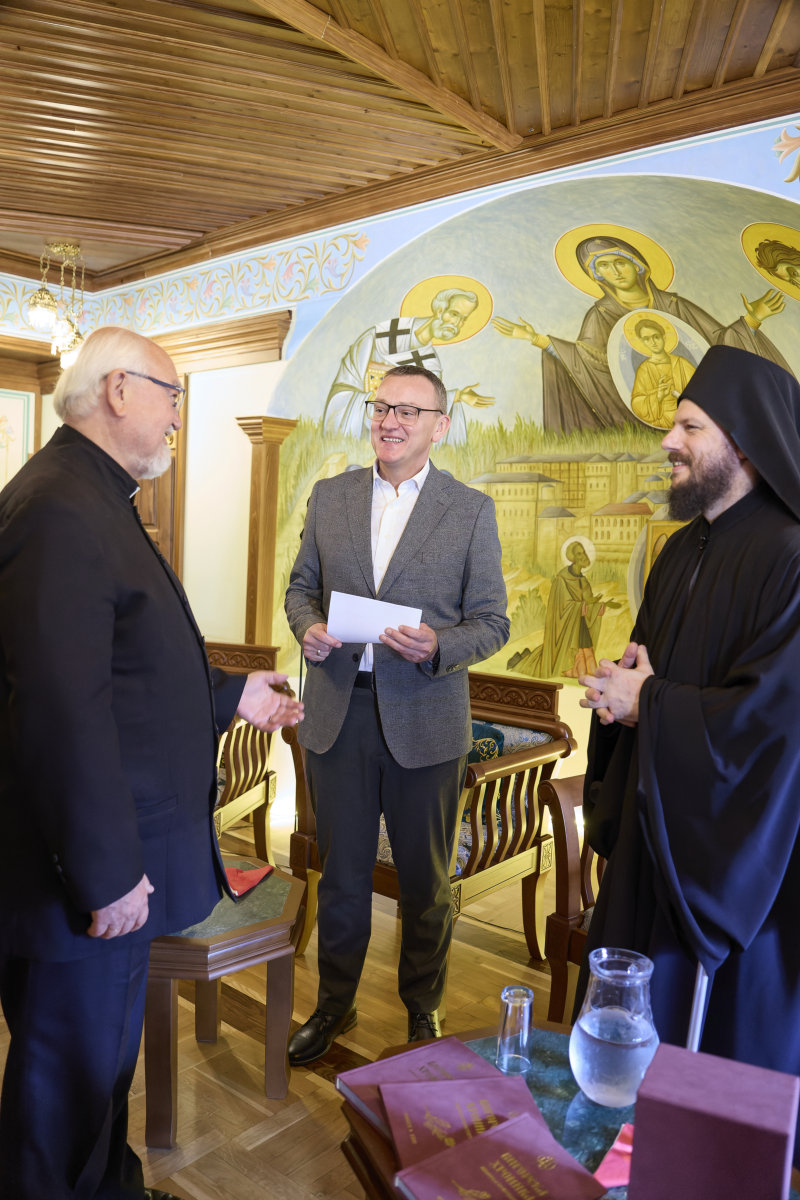
Dear brothers and sisters,
On behalf of all who feel a deep personal and spiritual bond with this Holy Monastery, allow me to express heartfelt gratitude to our Elder, His Grace Bishop Partenij of Antania, for his extraordinary energy and dedication.
May the Lord grant him strength and many years, to continue guiding his people in this same spirit for many years to come.
May the Most Holy Theotokos and Saint John the Forerunner remain his constant intercessors and protectors, and may the grace that flows through these pages be poured upon all who read them.
And when, in the future, some young soul opens this Chronicle—or the ones that will follow—though he may not know all the events, he will feel the same light that we feel today.
That will be the proof that this work has succeeded—that faith has continued to grow, that love has endured, and that the testimony lives on.
May this edition be blessed, and may he whose life became its living continuation be blessed as well.
Thank you.

